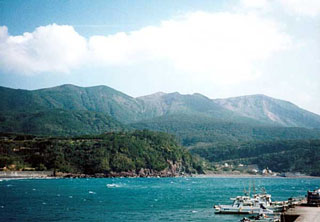Report on Kuchinoerabujima (Japan) — 17 October-23 October 2018
Smithsonian Institution / US Geological Survey
Weekly Volcanic Activity Report, 17 October-23 October 2018
Managing Editor: Sally Sennert.
Please cite this report as:
Global Volcanism Program, 2018. Report on Kuchinoerabujima (Japan) (Sennert, S, ed.). Weekly Volcanic Activity Report, 17 October-23 October 2018. Smithsonian Institution and US Geological Survey.
Kuchinoerabujima
Japan
30.443°N, 130.217°E; summit elev. 657 m
All times are local (unless otherwise noted)
JMA reported that a very small eruption at Kuchinoerabujima’s Shindake Crater was recorded at 1831 on 21 October, with additional activity between 2110 on 21 October and 1350 on 22 October. Plumes rose 200 m above the crater rim. During an overflight on 22 October observers noted ash in the emissions, though no morphological changes to the crater nor ash deposits were seen. The Alert Level remained at 3 (on a scale of 1-5).
Geological Summary. A group of young stratovolcanoes forms the eastern end of the irregularly shaped island of Kuchinoerabujima in the northern Ryukyu Islands, 15 km W of Yakushima. The Furudake, Shindake, and Noikeyama cones were erupted from south to north, respectively, forming a composite cone with multiple craters. All historical eruptions have occurred from Shindake, although a lava flow from the S flank of Furudake that reached the coast has a very fresh morphology. Frequent explosive eruptions have taken place from Shindake since 1840; the largest of these was in December 1933. Several villages on the 4 x 12 km island are located within a few kilometers of the active crater and have suffered damage from eruptions.

